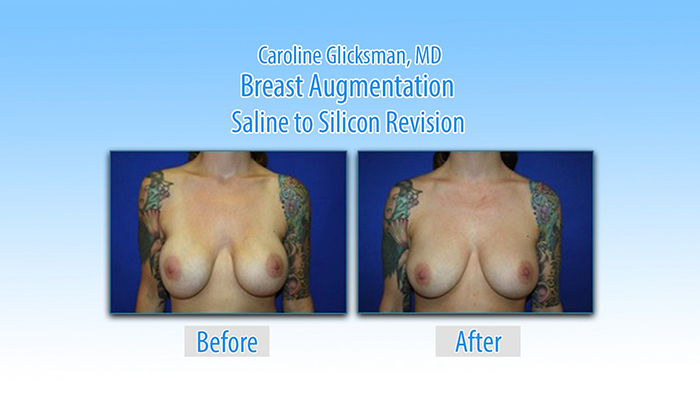Every day in the United States, thousands of patients seek a consultation for a breast augmentation revision. The reasons vary. It might be that the patient’s saline implant has deflated or her silicone implant has ruptured. Perhaps the patient doesn’t like her implant’s shape or size. But a lot of the time, breast augmentation revisions are needed because a patient got older, gained weight, lost weight or had a baby. In short, time took its toll. So, if you are someone who is about to go see a plastic surgeon about a revision, here are some tips to make sure that you don’t wind up a revision, revision, revision patient.
by Katherine Stuart
and Caroline Glicksman, MD
Don’t Repeat the Same Mistakes
Dr. Caroline Glicksman of New Jersey is a breast augmentation expert who lectures both nationally and internationally on how to improve breast augmentations and lower revision rates. In her opinion, the most important thing for a patient to consider during her breast augmentation revision consultation is implant size. A lot of complications that ensue from breast augmentation surgery such as stretching, bottoming out, rippling and having an implant that sits over on the side when you lean back, come from a mismatch between the size of the implant and the patient’s tissues. So, it’s paramount that you think long and hard about whether or not you need such a large implant. “Resizing a patient sometimes takes a little rethinking to get over that need to be so big. Because it’s expensive and you don’t want to keep doing it, and doing it.”
The second thing to consider during your revision consultation is the type of implant. A lot of patients originally went with saline because it was what they could afford or it was all that the surgeon had to offer. But many of the complications that lead a patient to request a revision are due to saline implants. These include wrinkling, visibility of rippling, a hard feeling and a disconnect between the patient’s own breast tissue and the implant itself. Today, there are lots of new options in terms of silicone fill, and shape that didn’t exist the first time around. So, make sure to seek out a plastic surgeon who offers the full range of implant types, saline, cohesive silicone gel, and highly cohesive silicone gel, and shapes.
Last, for women who suffer from their implants being felt and/or seen either due to weight gain, weight loss, pregnancy or age, make sure to ask about the new internal support options. The problem for patients whose implants can be felt and seen is that their tissue has become too thin and can no longer support the implant. In the past, there wasn’t a lot that could be done. But now, there are a number of different options for giving you some kind of internal support. Often described as a mesh, internal bra or scaffold, the surgeon inserts these biologic materials, which are FDA approved, during your revision surgery to give some support at the bottom of the breast and then wraps it around the base of the breast where your tissues are too thin or weak to support the weight of an implant. Over time, usually within the first year, these materials become integrated into your body where they’re eventually replaced by your own tissues. Since both surgeon and patient want an implant that lasts 10+ years, these new internal support options are life changing for those patients with poor skin quality.
By asking these questions and doing your research, you’ll keep yourself from becoming a revision, revision, revision patient. It’s really that simple.

















Facebook
Twitter
Instagram
YouTube
RSS